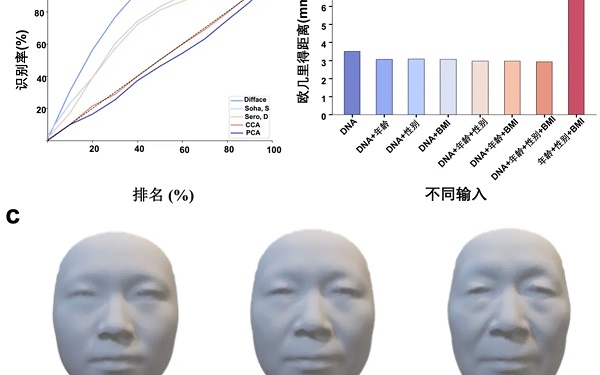Chinese research team generates 3D facial images based on DNA

Photo from research team
A Chinese research team, in collaboration with international research teams, has recently achieved a major breakthrough - developing an artificial intelligence (AI) model called the Difface, which can directly generate 3D facial images based on DNA sequences.
Chen Luonan, a professor from the Hangzhou Institute for Advanced Study of University of Chinese Academy of Sciences/Shanghai Jiao Tong University, told the Global Times on Wednesday that the technology is believed to support the search of missing children and forensic investigations at crime scenes.
The research team combined the pre-trained Transformer (an AI model architecture) with spiral convolution technology, equipping the AI model with what can be described as a spatial genetic decoder and a 3D visual modeling instrument, Chen said.
"It's like translating the same poem in two different languages," explained Chen. "The Transformer excels at deciphering the deep semantics of DNA sequences, while spiral convolution can precisely capture the geometric features of facial point clouds."
By mapping the two modal features into a unified space through contrastive learning and then gradually refining them with the "brush" of a diffusion model, they ultimately generate high-precision 3D human faces.
Chen said Difface is able to capture genetic traits, such as facial details like a recessed nasal root or prominent nasal wings — all of which can be accurately reconstructed through this technology.
Even with scarce DNA data (where researchers progressively reduced DNA sequence availability from 90 percent down to 10 percent), the model still maintains high generation accuracy, according to Chen.
Chen told the Global Times that the model uses about 10,000 points (forming a point cloud) to construct a face - meaning each facial feature is represented by point clusters. From infancy to adulthood, while facial size and proportions change dramatically, these fundamental topological structures remain constant.
If the model combines with data such as age and gender, its accuracy will further be leveled up. It can simulate the weathered appearance of a suspect at 60 years old or restore their youthful look at age 20.
The research team believes that this technology will offer a new approach to finding missing children — even if they are now adults, their current appearance can be generated using their DNA.
In addition, the model can be applied in criminal investigations, helping crack cold cases by reconstructing a suspect's face from biological evidence left at crime scenes. In anthropological research, ancient human DNA might reveal the true faces of our ancestors. And in the medical aesthetics field, it could enable personalized appearance predictions based on genetics, according to the team.
The research results were recently published in the top international journal Advanced Science.
-
Visionary Pathway - Hangzhou Playbook
July 15, 2025



